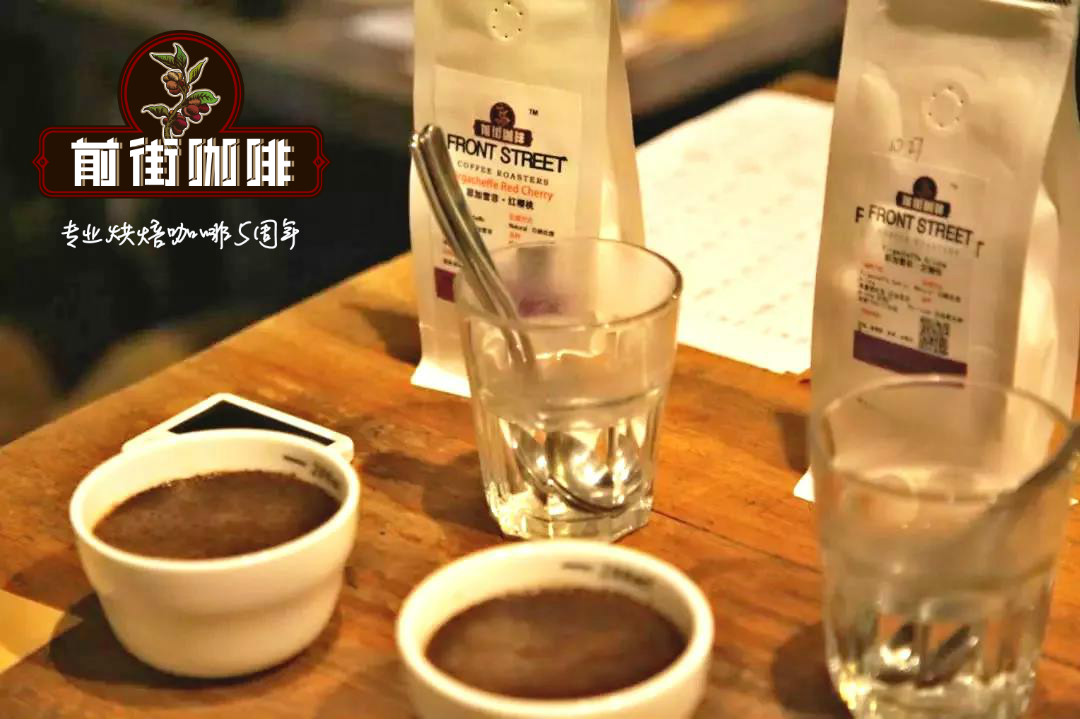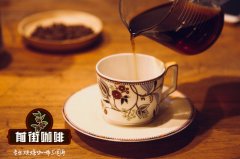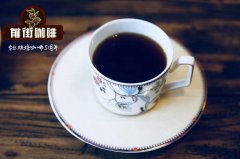Hawaiian Kona Coffee and Blue Mountain, Rose Sharpie How about Hawaiian Kona Coffee?

Professional coffee knowledge exchange more coffee bean information please follow the coffee workshop (Wechat official account cafe_style)
The coffee beans used in Kona coffee from Hawaii are grown on volcanic terrain. At the same time, there is a high density of artificial farming, so each bean can be said to be spoiled, the price is naturally expensive, second only to the Blue Mountains. Hawaiian Kona beans are evenly shaped and have a strong sour and sweet taste. The palate is moist and smooth. Moderate baking makes beans sour, while deep baking aggravates both bitterness and mellow taste. This coffee bean grows from sea level to 6000 feet. Gourmet coffee generally grows only in mountain areas, growing at a height of about 4000 to 6000 feet requires annual rainfall of about 80 feet and is obvious in dry and wet seasons. The soil for growing gourmet coffee beans requires very fertile soil, and usually volcanic rock, light cloudy or cloudy weather is also necessary in the growth environment of high-quality coffee beans. The daytime temperature needs 15-20 ℃. This climate results in a longer growth process, a unique growth and climatic environment that leads to a stronger coffee flavor.
Although planted at an altitude of several hundred meters, Kona, from the Big Island of Hawaii, with a mild sea breeze and fertile volcanic soil, has an incomparably clean acidity and sweetness. Compared with the blue mountains with higher elevations, it is even worse.
Coffee plants were first introduced to Hawaii in 1817 during the reign of King Kamehameha, the first Spanish consultant, Don Francisco de Paula Marin. The planting was not successful, and in 1825 Oahu Mayor Chie Boki successfully introduced coffee from Brazil to Manoa Valley. Since then coffee has been grown all over the island. At present, there are about 950 farms growing coffee in Kauai, Oahu, Maui, Mokokai and Big Island, most of which are family-run small farmers, covering a total area of 7900 acres.
When it comes to Hawaiian coffee, most people think of KONA and Kona coffee. In 1828, missionary Samuel Ruggles first planted coffee in the Kona area of the big island. To date, KONA Kona coffee production accounts for about half of Hawaii's total coffee production, with about 600 independent farms located in the north and south of Kona. Kona Coffee is grown on the west side of Manua Loa and on the slopes of the Hualailai volcano, mostly at low and middle elevations, about 3000-2000 feet. The volcanic area has always been famous for its black soil, which is moderately acidic and alkaline, is more rich in minerals, and helps to maintain soil water content. Kona area is sunny early in the morning, and clouds begin to emerge at noon, which happens to keep coffee seedlings away from the hot afternoon sun, so it is said to be suitable for coffee pollination and flowering, contributing to the fruiting climate of coffee cherries.
Mark Twain, an American writer, mentioned in Letters from Hawaii in July 1866, "Kona coffee has a richer flavor than any other, be it grown where it may and call it by what name you please." Legend has it that Kona coffee has become his favorite ever since. Coffee experts believe that Kona Coffee is as famous as Jamaican Blue Mountain Coffee, with elegant and mellow taste and slightly sour taste. With the adjustment of roasting degree, it can be a cup of clear tea or a cup of delicious fruit juice.
Front Street Coffee of Hawaii KONA is in 2009, 2011 Geberia (Hawaii KONA Review) Cup Grand Prix, won the runner-up title of Queen Farm, Queen's Farm. 70% of the harvest here can be called the top super boutique beans, it is known for its high quality farm. Even, the boutique beans which are slightly worse than it also have the fragrance of super-grade boutique beans. People in the baking industry are amazed and full of praise!
From the point of view of raw beans, uniform size, less fragrant defective beans, beans partial to olive green, moisture content of 11-13%, grass flavor and pungent spicy aroma. The centerline of raw beans is light brown.
Suggestion on coffee baking in Qianjie
Kona is the same as Blue Mountain Coffee, and both are low-density, low-density beans, so Qianjie Coffee thinks that the temperature of the beans should not be too high. When it is sweet, the color changes to light yellow, high moisture content, and needs to be steamed for enough time. Coffee beans are refreshing and clean with a strong and heavy touch, and Qianjie coffee recommends Kona not to roast too deeply, but medium and shallow roasting (City--Full City-).
Roaster used in Qianjie Coffee: Yang family 800N, input 550g raw beans
Hawaii Kona baking curve:
Put the furnace temperature to 200 degrees Celsius, adjust the firepower to 150 degrees after opening the throttle for 1 minute, keep the throttle unchanged, bake to 5 degrees 35 ", the temperature is 150 degrees, the bean surface turns yellow, the smell of grass completely disappears, the dehydration is completed, the firepower is adjusted to 140 degrees, and the throttle is changed to 4.
In the 9th '30th minute, ugly wrinkles and black markings appear on the bean surface, and the smell of toast obviously changes to the smell of coffee, which can be defined as a prelude to an explosion. At this time, listen carefully to the sound of the explosion point, start the explosion at 9: 30 ", lower the firepower to 70 degrees, the throttle should be fully open (adjust the firepower to be very careful, not so small as to be free of bursting sound), turn off the heat at 182 degrees, and put the pot at 193.4 degrees.
Test report on the front street Kona coffee cup in Hawaii
The medium-baked Kona mainly gets a balanced, warm, sweet nectar and elegant, full-bodied taste. Brewing coffee gives off a sweet mulberry aroma that makes people feel sweet and happy. Yuyun, a kind of soft malt, slips into the throat and exhales and then gushes on the throat, which cools down like a cup of mulberry tea.
Suggestion on brewing coffee in Qianjie
Filter cup: V60
Water temperature: 92 degrees
Degree of grinding: small Fuji 3.5
Baking degree: medium baking
Steaming time: 30 seconds
Hawaiian Kona flavor: malt, mulberry fruit, long-lasting caramel sweetness
Qianjie Hawaiian Kona Coffee suggestion: slow and steady continuous water injection: thin water flowing around, gently injecting water to let it extract evenly, very slowly, or stirring properly with a stirring rod, usually in the steaming stage, a cross stirring is carried out to make the water fully come into contact with coffee powder and increase the release of aromatic substances.
Important Notice :
前街咖啡 FrontStreet Coffee has moved to new addredd:
FrontStreet Coffee Address: 315,Donghua East Road,GuangZhou
Tel:020 38364473
- Prev

Jamaica coffee in addition to Blue Mountain there are other fine beans? Jamaica fine coffee beans recommended
Professional coffee knowledge exchange More coffee bean information Please pay attention to Coffee Workshop (Weixin Official Accounts cafe_style) Many connoisseurs around the world believe that Jamaica Blue Mountain Coffee is one of the best coffees in the world. The perfect balance of aroma, body and acidity makes Blue Mountain coffee very special. However, what really sets Blue Mountain Coffee apart is its rounded, sweet finish.
- Next

How much is the taste and flavor of Papua New Guinea Camel coffee beans? how much is it per cup?
Professional coffee knowledge exchange more coffee bean information please follow the coffee workshop (Wechat official account cafe_style) Papua New Guniea Papua New Guinea Manor Camel Farm this is a low-key island country, located in the eastern part of New Guinea Island Papua New Guinea is the world's third largest island country, coffee is an important crop on the island, distributed in the alpine areas of the small rules
Related
- Detailed explanation of Jadeite planting Land in Panamanian Jadeite Manor introduction to the grading system of Jadeite competitive bidding, Red bid, Green bid and Rose Summer
- Story of Coffee planting in Brenka region of Costa Rica Stonehenge Manor anaerobic heavy honey treatment of flavor mouth
- What's on the barrel of Blue Mountain Coffee beans?
- Can American coffee also pull flowers? How to use hot American style to pull out a good-looking pattern?
- Can you make a cold extract with coffee beans? What is the right proportion for cold-extracted coffee formula?
- Indonesian PWN Gold Mandrine Coffee Origin Features Flavor How to Chong? Mandolin coffee is American.
- A brief introduction to the flavor characteristics of Brazilian yellow bourbon coffee beans
- What is the effect of different water quality on the flavor of cold-extracted coffee? What kind of water is best for brewing coffee?
- Why do you think of Rose Summer whenever you mention Panamanian coffee?
- Introduction to the characteristics of authentic blue mountain coffee bean producing areas? What is the CIB Coffee Authority in Jamaica?

